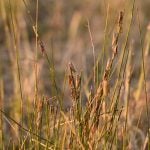
Tag Archives pastures

A rancher’s ‘bitin’ list’
A Little Bit Western: Invasive weeds, gophers, grasshoppers and raccoons are all on this rancher’s naughty list

Give special attention to first-calved beef heifers
Better Bunks and Pastures: Getting heifers ready for their next pregnancy is the goal of a nutrition program specifically for them

Early-spring-seeded winter cereals can bring more, better forage
The practice does have some risks — but maybe not the ones you think

Good weather holds through harvest
Eppich News: Wandering cows and calves made rounding them up a challengee

South Dakota farmer focuses on soil biology
Retired farmer Rick Bieber spoke at the Western Canada Conference on Grazing and Soil Health

Prepare your ranch and business plan for bouts with drought
A Little Bit Western: There are ways to extend feed and water — but do so with caution and monitoring

Redefining a ranch
Holistic management has made the Guilford ranch more efficient — and it carries more cattle

Plants and their identity crises
A Little Bit Western: One person’s weed is another person’s useful and cherished plant

For your cattle, the best biosecurity offence is defence
15 plays to keep your beef herd safe

Reduced-area pest spraying can still hit moving targets
The RAAT method can cut insecticide use in half and still kill most grasshoppers on pasture


